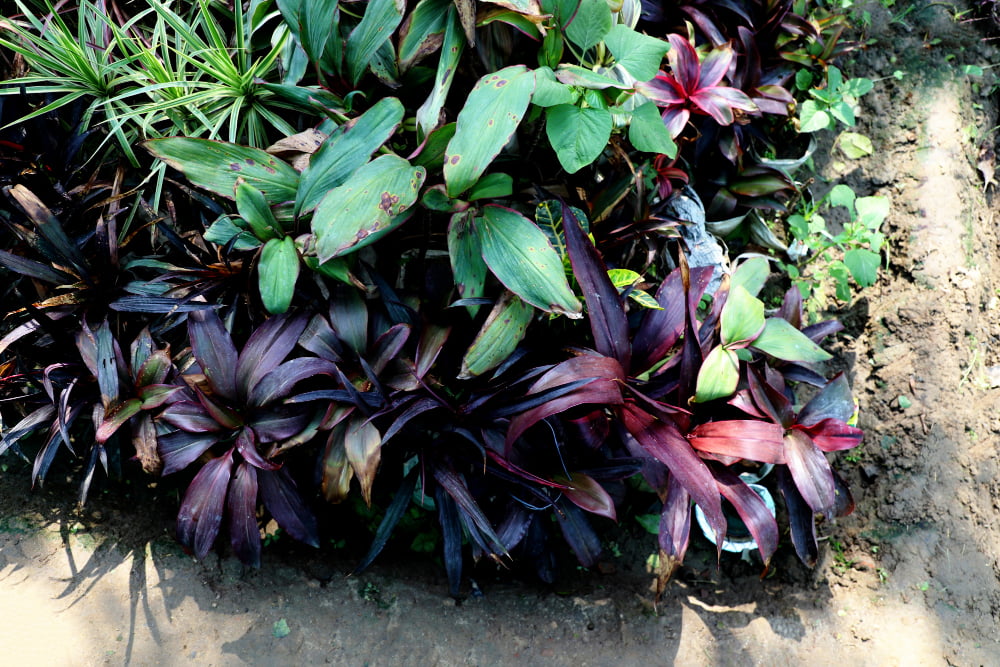Why is My Burgundy Rubber Plant Green? Unveiling the Mystery
Introduction
Burgundy rubber plants are renowned for their striking deep burgundy foliage, which adds a touch of elegance to any indoor space. However, it can be concerning when the leaves of your burgundy rubber plant start turning green. In this article, we delve into the possible reasons behind this phenomenon and provide practical solutions to help restore the vibrant burgundy coloration of your plant.
Understanding Burgundy Rubber Plant Varieties Classic Burgundy Rubber Plant
The classic burgundy rubber plant (Ficus elastica) is characterized by its large, elliptical leaves with a deep burgundy hue. This variety is prized for its rich color and glossy foliage, making it a popular choice among plant enthusiasts.
Variegated Varieties
In addition to the classic burgundy rubber plant, there are variegated varieties available, featuring a blend of burgundy and green hues. While these variegated cultivars offer a unique aesthetic appeal, they may exhibit variations in leaf coloration, including patches of green.
Possible Reasons for Green Leaves Light Intensity
Insufficient light exposure is one of the primary reasons for green leaves in burgundy rubber plants. These plants require bright, indirect light to maintain their burgundy coloration. If placed in low light conditions, they may revert to producing more chlorophyll, resulting in green leaves.
Nutrient Deficiency
A lack of essential nutrients, particularly nitrogen and magnesium, can also cause the leaves of burgundy rubber plants to turn green. Ensure your plant receives a balanced fertilizer regimen to provide the necessary nutrients for healthy growth and vibrant foliage.
Stress Factors
Stress factors such as temperature fluctuations, overwatering, or root bound conditions can contribute to leaf discoloration in burgundy rubber plants. Address any underlying stressors to promote overall plant health and restore the desired leaf color.
Remedies for Green Leaves Adjusting Light Conditions
Place your burgundy rubber plant in a location with adequate bright, indirect light to encourage the development of burgundy-colored leaves. Avoid direct sunlight, as it can cause leaf scorching.
Nutrient Supplements
Provide your plant with a balanced liquid fertilizer formulated for houseplants to replenish any nutrient deficiencies. Follow the manufacturer’s instructions for application to prevent over-fertilization, which can damage the plant.
Stress Reduction
Ensure proper watering practices and maintain consistent environmental conditions to minimize stress on your burgundy rubber plant. Repotting into a larger container with fresh, well-draining soil can also alleviate root bound conditions and promote healthy growth.
Conclusion
In conclusion, the appearance of green leaves on your burgundy rubber plant can be attributed to various factors, including insufficient light, nutrient deficiencies, and stress. By addressing these issues and implementing appropriate remedies, you can restore the vibrant burgundy coloration of your plant and enjoy its beauty for years to come.
FAQs
Can I prune my burgundy rubber plant to encourage new growth?
Yes, pruning can help stimulate new growth and maintain the desired shape of your plant. Use clean, sharp pruning shears to remove any dead or leggy stems.
How frequently should I fertilize my burgundy rubber plant?
Fertilize your plant every 4-6 weeks during the growing season (spring and summer) with a balanced liquid fertilizer diluted to half strength.
Is it normal for burgundy rubber plants to lose their color over time?
While some fading of color may occur naturally as leaves age, significant loss of burgundy coloration may indicate underlying issues that need to be addressed.
Can I propagate my burgundy rubber plant from cuttings?
Yes, burgundy rubber plants can be propagated from stem cuttings. Select a healthy stem with several leaves and place it in moist potting soil or water until roots develop.
Are burgundy rubber plants toxic to pets?
Yes, burgundy rubber plants contain latex sap, which can be toxic if ingested by pets. Keep them out of reach of curious animals and seek veterinary attention if ingestion occurs.






